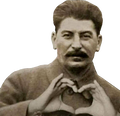“The street is no longer measured by meters but by corpses ... Stalingrad is no longer a town. By day it is an enormous cloud of burning, blinding smoke; it is a vast furnace lit by the reflection of the flames.
The Battle of Stalingrad was a brutal military campaign between Russian forces and those of Nazi Germany and the Axis powers during World War II.
By spring 1942, the Germans had stabilized their front in a line running roughly from Leningrad in the north to Rostov in the south. There were a number of salients in the line where Soviet offensives had pushed the Germans back, notably to the northwest of Moscow and south of Kharkov, but neither was particularly threatening.
In the far south the Germans were in control of most of the Ukraine and much of the Crimean, although Sevastapol remained in Soviet hands along with a small portion of the Kerch peninsula.
The capture of Stalingrad was important to Hitler for two primary reasons. Firstly, it was a major industrial city on the Volga River -- a vital transport route between the Caspian Sea and Northern Russia. Secondly, its capture would secure the left flank of the German armies as they advanced into the oil-rich Caucasus region -- with a goal of cutting off fuel to Stalin’s war machine.
Army Group South was selected for a sprint forward through the southern Russian steppes into the Caucasus to capture the vital Soviet oil fields there. Instead of focusing his attention on the Soviet Capital of Moscow as his general staff advised, Hitler continued to send forces and supplies to the eastern Ukraine.
The planned summer offensive was code-named Fall Blau (trans.: “Case Blue”). It was to include the German Sixth Army, Seventeenth Army, Fourth Panzer Army and First Panzer Army. Army Group South had overrun the Ukrainian SSR in 1941. Poised in the Eastern Ukraine, it was to spearhead the offensive.
The battle of Stalingrad was one of the largest battles in human history. It raged for 199 days. At different times the Germans had held up to 90% of the city, yet the Soviet soldiers and officers fought on fiercely.
The Soviets first defended Stalingrad against a fierce German onslaught. So great were Soviet losses that at times, the life expectancy of a newly arrived soldier was less than a day, and the life expectancy of a Soviet officer was three days.
Their sacrifice is immortalized by a soldier of General Rodimtsev, about to die, who scratched on the wall of the main railway station (which changed hands 15 times during the battle) “Rodimtsev’s Guardsmen fought and died here for their Motherland.”
-
Soviet Storm. WW2 in the East - The Battle of Stalingrad.
 (really good)
(really good) -
Soviet Storm. WW2 in the East - Secret Intelligence of the Red Army

-
Battle of Stalingrad 42-43 Kings and Generals (has a bit of anti-soviet propaganda but its ok)

-
Stalingrad through the Eyes of the Red Army Soldiers: Spiegel :flag-su:
The State and Revolution :flag-su:
Follow the ChapoChat twitter account
![]()
THEORY; it’s good for what ails you (all kinds of tendencies inside!) ![]()
COMMUNITY CALENDAR - AN EXPERIMENT IN PROMOTING USER ORGANIZING EFFORTS ![]()
Join the fresh and beautiful batch of new comms:

@Beatnik @ScreamoBMO @TransComrade69 Lets us never forget the great sacrifices of the Soviet Red Army in the most important battle of WW2 :flag-su:
deleted by creator
thanks